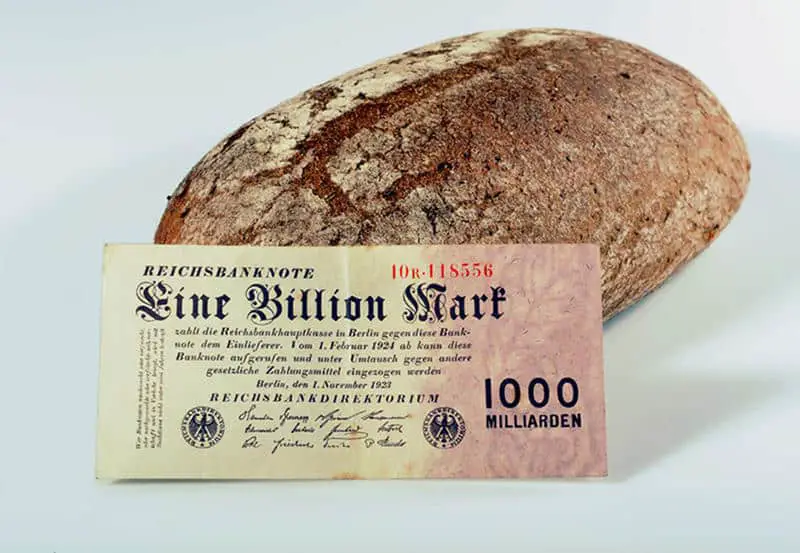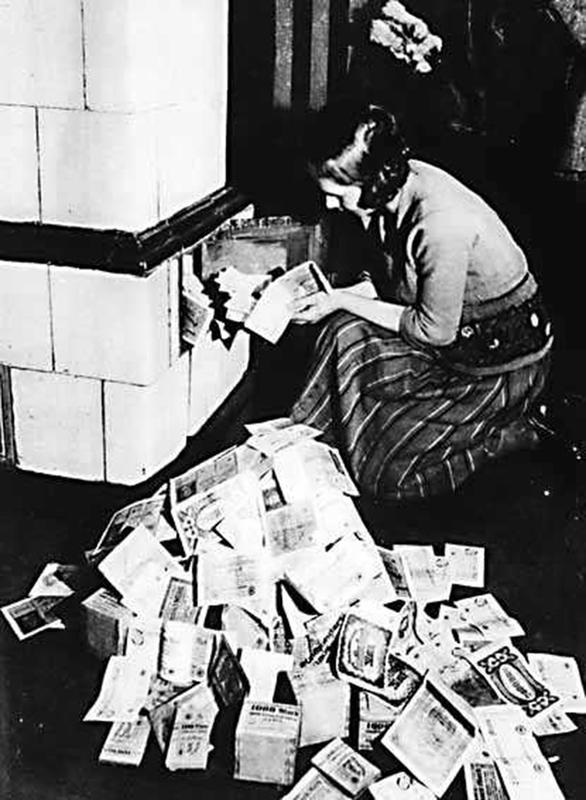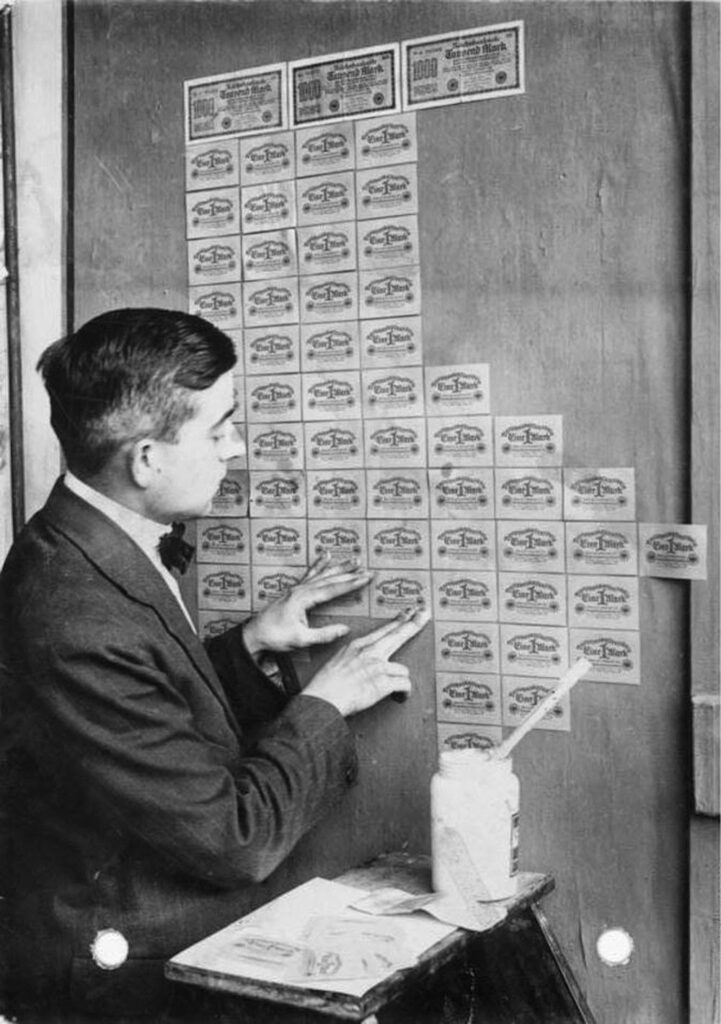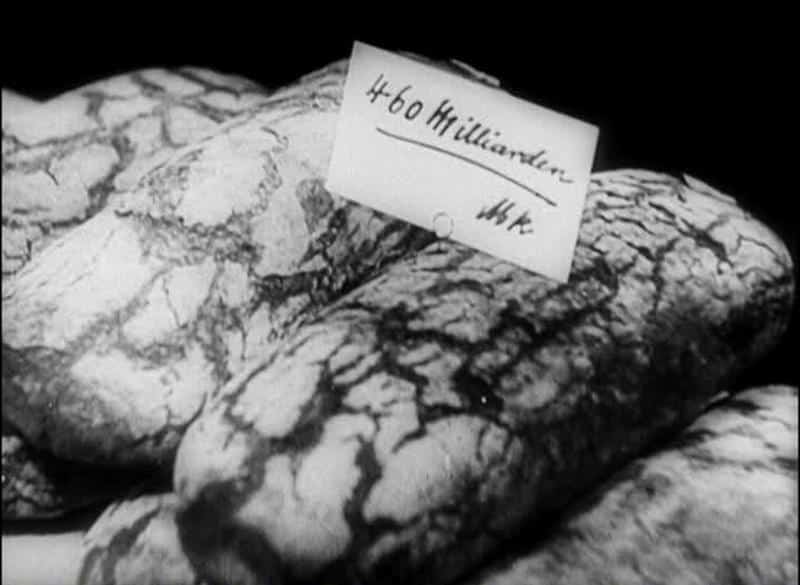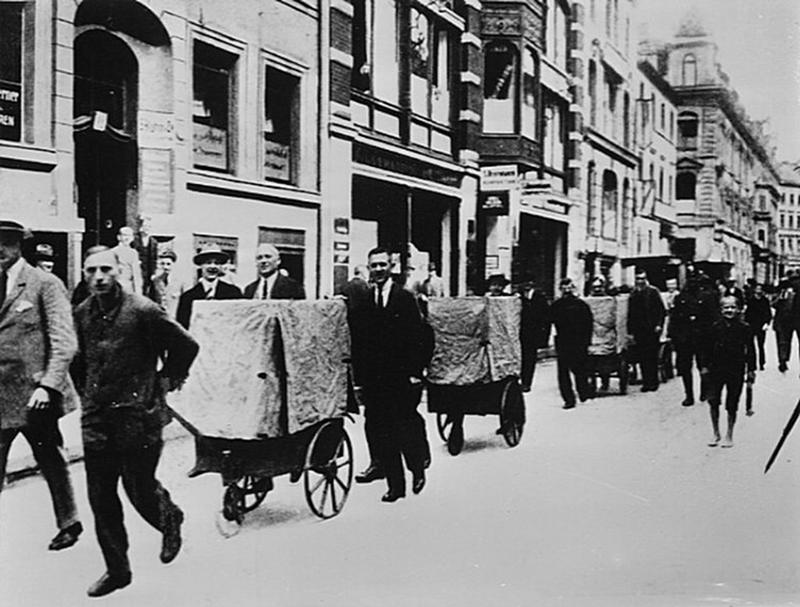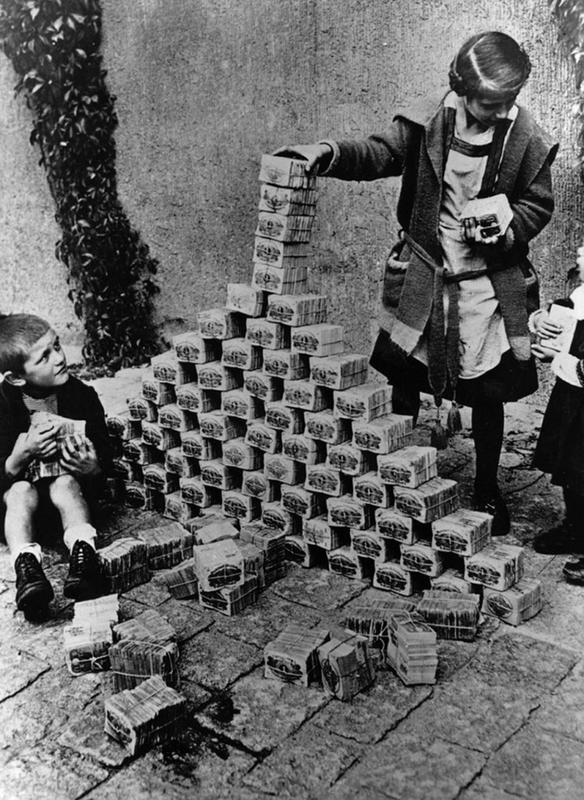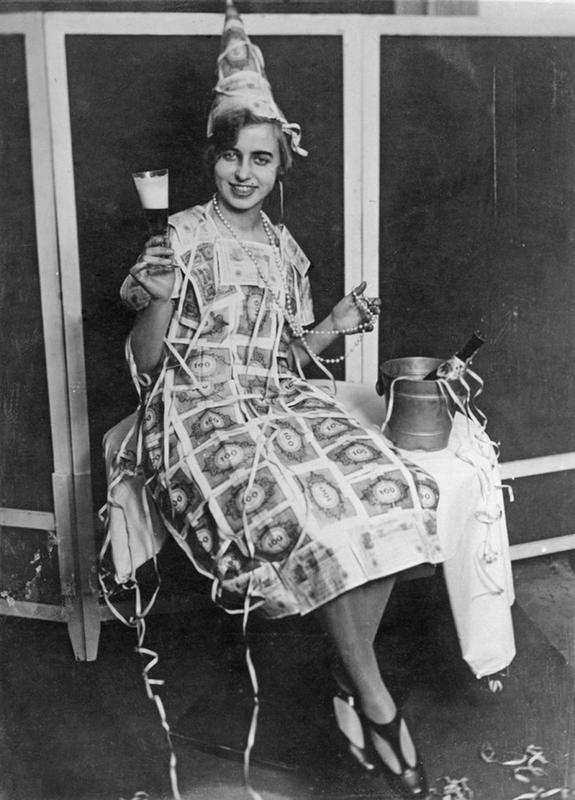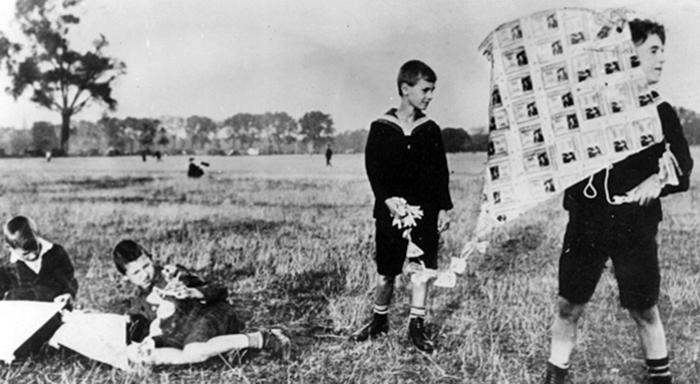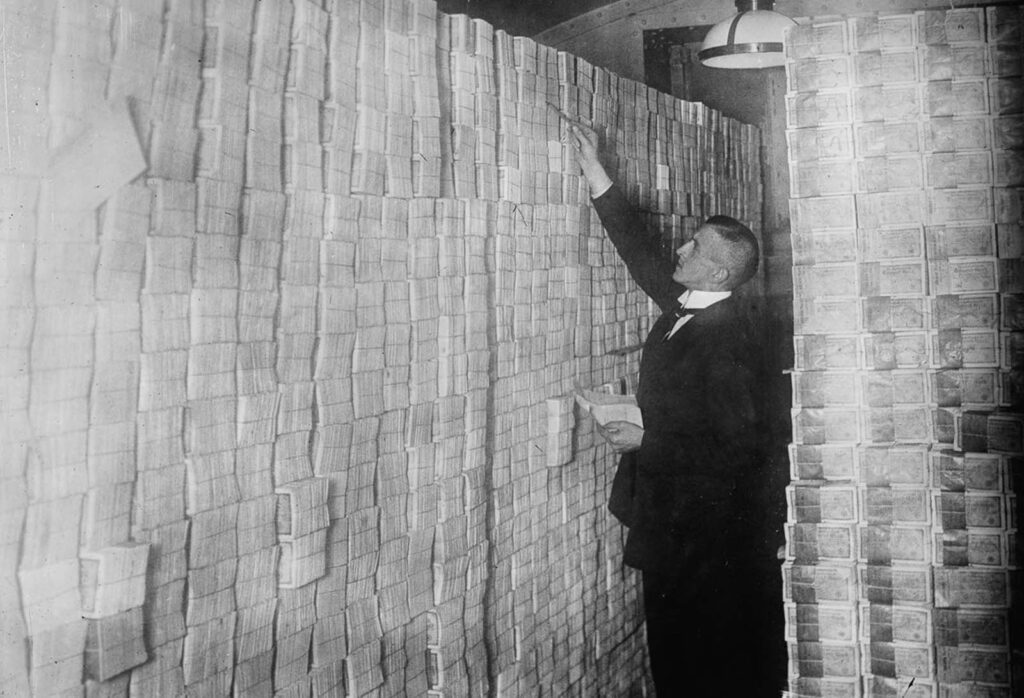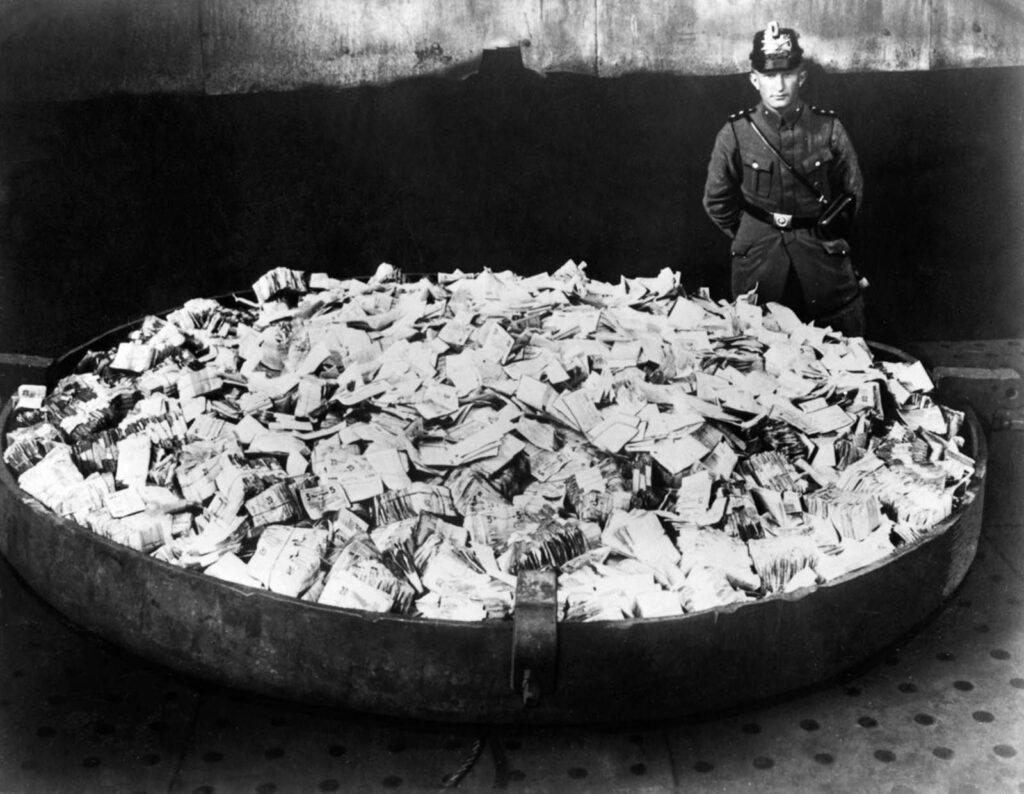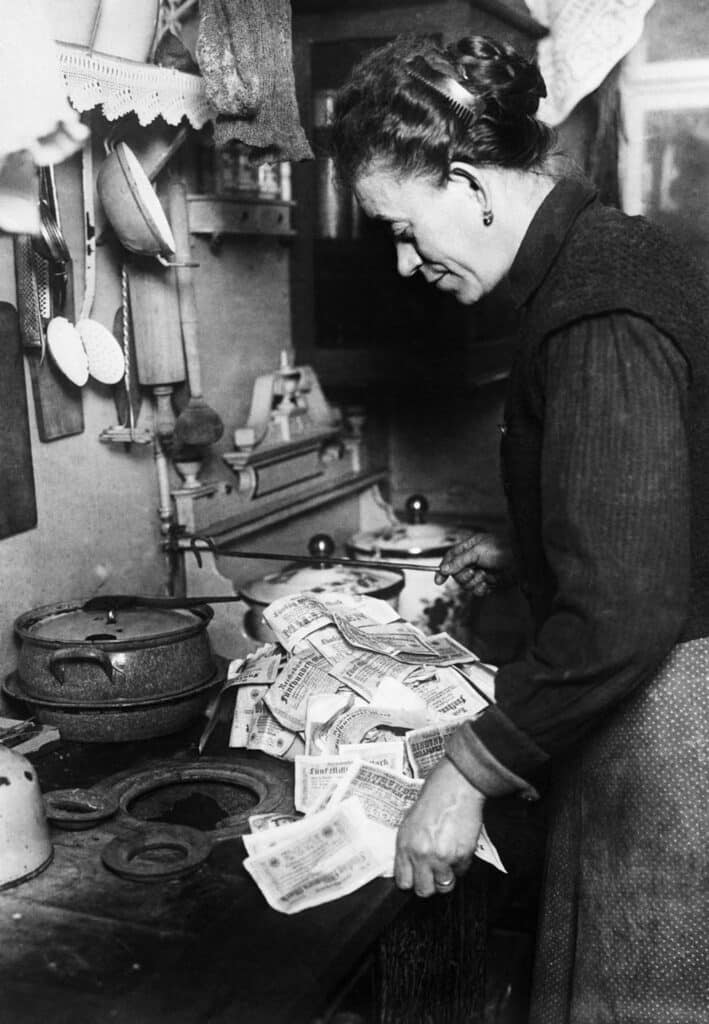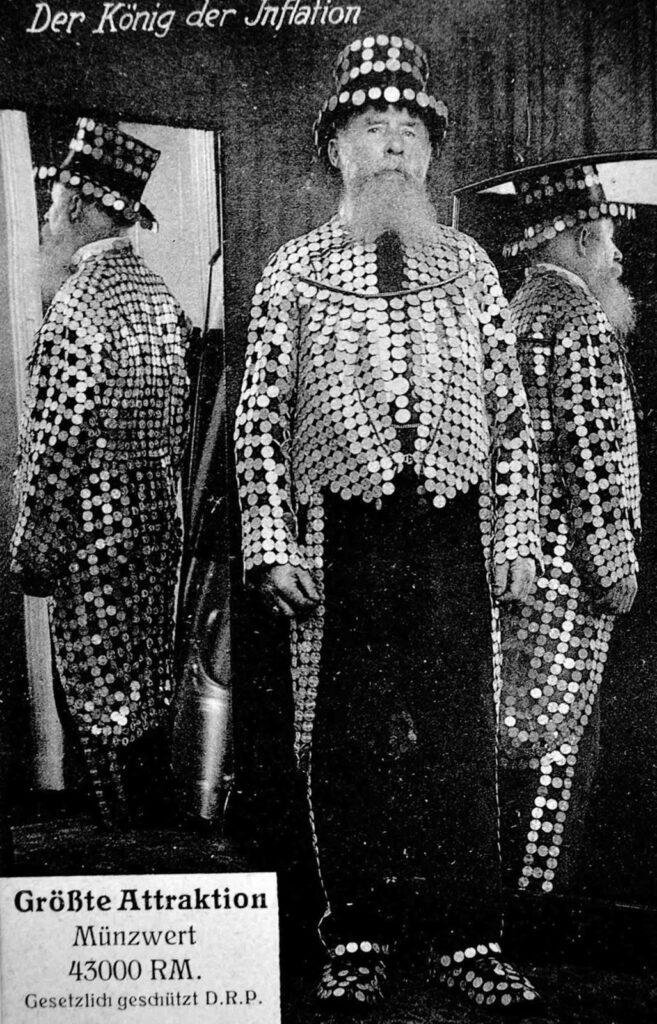Before World War One, Germany was a prosperous nation. In the decades since its unification, it had become an industrial powerhouse leading Europe in fields like chemicals, machinery, and optics. Its gold-backed currency traded at comparable rates to the British shilling, Italian lira, and French Franc (about 4-5:1 against the U.S. Dollar).
Nine years later, hyperinflation hit its peak in 1923. A loaf of bread in 1922, Germany cost 163 marks. In September 1923, it cost 1,500,000 marks and at the peak of German hyperinflation, a loaf of bread cost 200,000,000,000 Marks.
How hyperinflation leads to bread costing 200 billion Marks
Hyperinflation gripped the company for years starting in 1921. Its causes stem primarily from World War One. Germany and almost every other country that took part in the war drove itself deep into debt, financing this conflict. When Germany eventually lost, it also faced an additional penalty of 132 billion gold marks in reparations.
Germany began to buy foreign currency at any price to make payments, driving their already weak money down further. As their currency devalued, they had to print more money to pay back their debts, further devaluing it.
They were able to stabilize their currency in early 1922 at around 320 Marks per Dollar. Following that, they held a few international reparations conferences, including one led by J. P. Morgan, a U.S. investment banker. These were unable to find any working solutions and things spiraled out of control again.
At the peak of hyperinflation, one U.S. dollar was worth 1 trillion Marks. The currency had become worthless. A wheelbarrow of money couldn’t buy a loaf of bread and was more useful as kindling. That’s how the price of a German loaf of bread could get so high.
